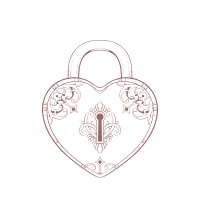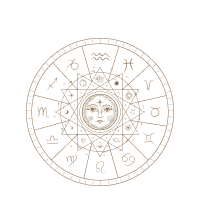
Biorhythms Compatibility: Partner Synergy Analyzed
Delve into the insights of biorhythms compatibility to enhance your personal connections and understand the natural sync between partners.
article by Adrian Wallace
Introduction to Biorhythms
The concept of biorhythms charts the rhythmic biological cycles that dictate our physical, emotional, and intellectual well-being. Originating from the 19th century, this pseudoscientific field purports that from the moment of birth, we each embark on cycles that influence various aspects of our lives. In the context of relationships, understanding these cycles could illuminate the dynamics between individuals and improve interpersonal compatibility. As we step into 2024, biorhythms continue to captivate those seeking to foster deeper connections with themselves and others.

Biorhythmic Cycles Explained
The three principal biorhythm cycles include the physical (23 days), emotional (28 days), and intellectual (33 days) cycles. Each cycle oscillates between positive, negative, and critical phases, influencing our effectiveness in daily activities. For instance, when someone's physical cycle is high, they are likely to have more energy and stamina. Conversely, a low emotional cycle might make one more susceptible to mood swings. Modern interpretations often integrate these cycles with astrological principles to provide a more nuanced compatibility assessment.

Compatibility and Its Measurements
Biorhythms compatibility examines the synchronicity of two individuals' cycles to predict the harmony of their interactions. The underlying belief is that partners whose biorhythms are in sync will experience a smoother relationship. Compatibility measurements involve comparing the highs, lows, and critical phases of each partner's cycles. As we become increasingly interconnected through the digital age, online platforms and apps now offer sophisticated algorithms to calculate this compatibility, aiming to provide actionable insights into one’s relationships.

Practical Applications of Biorhythms
Applying biorhythms compatibility can extend beyond romantic relationships, touching upon friendships, team dynamics, and family interactions. In professional settings, it can be utilized to schedule critical meetings or team-building exercises when collective biorhythms predict peak performance. This concept has also found its way into sports, where trainers may align training intensity with athletes' physical cycles to optimize results and prevent injuries.

Criticism and Consideration
As with any pseudoscientific theory, biorhythms and their application in compatibility assessments have faced criticism. Skeptics argue the lack of empirical evidence and the dangers of relying on cyclic predictions for life decisions. Supporters advise using biorhythms as a supplementary tool rather than a deterministic guide, advocating their value in fostering self-awareness and interpersonal understanding in the mystery that is human connection.
The Future of Biorhythms
The evolution of biorhythms' interpretation, particularly in the digital realm, is likely to expand with advancements in technology and data analytics. As we embrace artificial intelligence and machine learning, the potential to refine biorhythms compatibility predictions grows. Whether for curiosity or in search of harmony, society's interest in such topics persists, underscoring our ongoing quest to decode the elements that bind us to one another.
Published: 1/30/2024
Modified: 1/30/2024
More predictions
Come back here soon to learn more about yourself and your future


The Reality of Biorhythms: Myth or Science?
Delve into the scientific stance on biorhythms and discover whether there's evidence backing up this intriguing concept.


The Rhythms Within: An Introduction to Biorhythm Cycles
Learn about the intriguing concept of biorhythm cycles and how they may influence your daily life in physiological, emotional, and intellectual domains.


The Biorhythms Chart: A Personal Energy Guide
Discover the insights of a biorhythms chart and how it reflects your personal energy cycles for better life management.